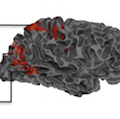Abstract
Repetition priming (RP) is a form of learning, whereby classification or identification performance is improved with item repetition. Various theories have been proposed to understand the basis of RP, including alterations in the representation of an object and associative stimulus–response bindings. There remain several aspects of RP that are still poorly understood, and it is unclear whether previous theories only apply to well-established object representations. This paper integrates behavioral, neuroimaging, and computational modeling experiments in a new RP study using novel objects. Behavioral and neuroimaging results were inconsistent with existing theories of RP, thus a new perceptual memory-based caching mechanism is formalized using computational modeling. The model instantiates a viable neural mechanism that not only accounts for the pattern seen in this experiment but also provides a plausible explanation for previous results that demonstrated residual priming after associative linkages were disrupted. Altogether, the current work helps advance our understanding of how brain utilizes repetition for faster information processing.
